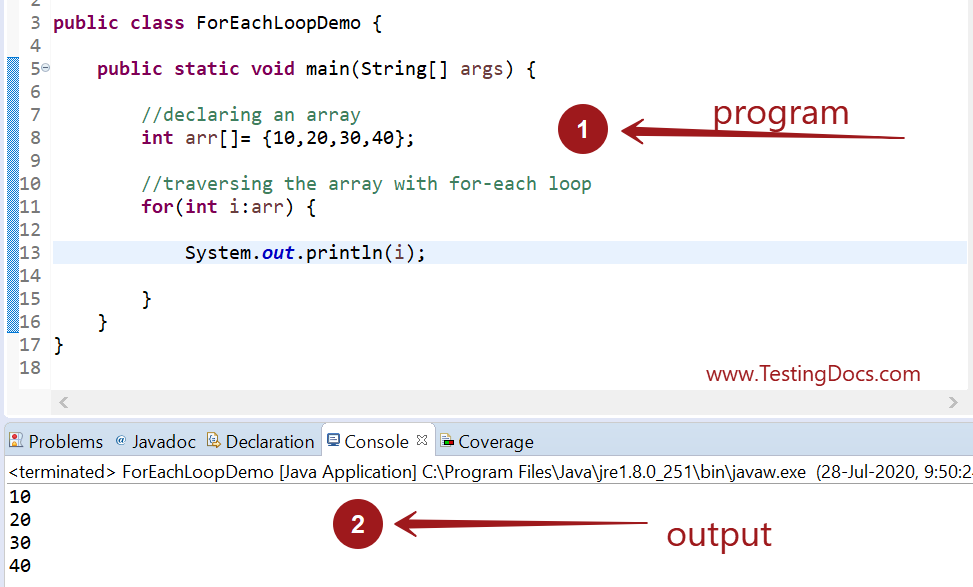
It provides an alternative approach to traverse the array or collection in Java. The syntax of Java for-each loop consists of data_type with the variable followed by a colon (:), then array or collection. The Java for-each loop or enhanced for loop is introduced since J2SE 5.0. It eliminates the possibility of programming errors.Moreover, you cannot traverse the odd or even elements only.īut, it is recommended to use the Java for-each loop for traversing the elements of array and collection because it makes the code readable. Here, you do not have the option to skip any element because it does not work on an index basis. The drawback of the enhanced for loop is that it cannot traverse the elements in reverse order. It is known as the for-each loop because it traverses each element one by one. The advantage of the for-each loop is that it eliminates the possibility of bugs and makes the code more readable. Resolution: Unresolved Affects Version/s: None Fix Version/s: None Component/s: tools. It is mainly used to traverse the array or collection elements. Parse errors when deconstructing a record using the enhanced for loop of JEP 432. The syntax of the for-loop is: Here the initialization expression is executed once before the first iteration of.



We can use a simple for-loop in Java to iterate over a range of values. Let’s explore each one of them in detail: 1. The Java for-each loop or enhanced for loop is introduced since J2SE 5.0. There are two types of for-loops in Java: Simple for-loop and enhanced for-loop (for-each loop). Next → ← prev Java For-each Loop | Enhanced For Loop


 0 kommentar(er)
0 kommentar(er)
